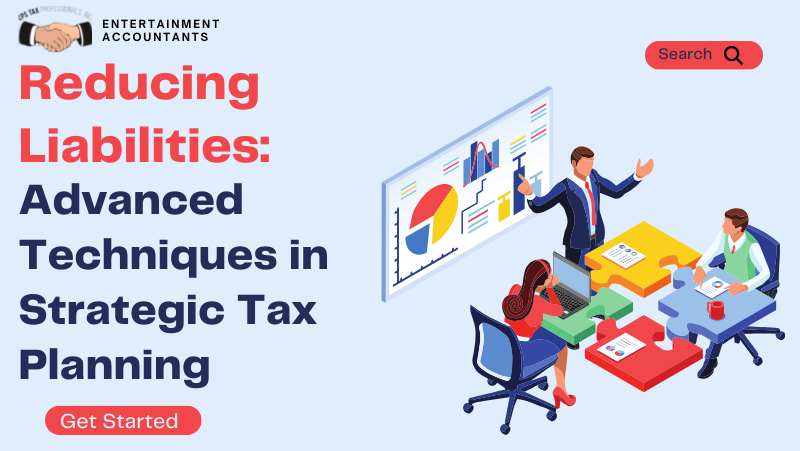Strategic tax planning goes beyond mere compliance; it involves a proactive approach to minimize tax liabilities and optimize financial outcomes. In this advanced guide, we will explore sophisticated techniques for reducing liabilities through strategic tax planning. These techniques are designed to provide individuals and businesses with the tools they need to navigate complex tax landscapes while maximizing savings.
Understanding Liabilities in Tax Planning:
Tax liabilities encompass the total amount of taxes owed to governmental authorities. They can include income taxes, capital gains taxes, estate taxes, and more. Strategic tax planning focuses on legally minimizing these liabilities through advanced techniques that require careful consideration and expert guidance.
Advanced Techniques for Reducing Tax Liabilities:
Tax-Efficient Investments:
Explore opportunities for tax-efficient investments, such as tax-advantaged retirement accounts, municipal bonds, and qualified dividends. These investments can generate income with reduced tax consequences, contributing to long-term savings.
Roth Conversions:
Consider converting traditional retirement accounts, such as a Traditional IRA, into Roth IRAs. While this may incur a tax liability in the short term, it can lead to tax-free withdrawals in retirement, providing significant savings over time.
Gifting and Estate Planning:
Engage in strategic gifting and estate planning to minimize estate tax liabilities. Leveraging techniques such as family limited partnerships, irrevocable trusts, and annual gift exclusions can help transfer wealth efficiently while reducing tax exposure.
Tax-Loss Harvesting:
Implement tax-loss harvesting to offset capital gains with capital losses. By strategically selling investments at a loss, you can use those losses to minimize taxable gains, thereby reducing your overall tax liability.
Charitable Giving Strategies:
Explore advanced charitable giving strategies, such as donor-advised funds, charitable remainder trusts, and charitable lead trusts. These approaches allow you to support charitable causes while enjoying tax benefits, including income deductions and reduced estate taxes.
Entity Structure Optimization:
For businesses, selecting the right entity structure is crucial. Considerations such as forming a Limited Liability Company (LLC) or an S Corporation can offer tax advantages by reducing self-employment taxes or allowing for pass-through taxation.
Qualified Business Income Deduction:
Take advantage of the Qualified Business Income (QBI) deduction, which provides a deduction of up to 20% of qualified business income for pass-through entities. Understanding the eligibility criteria and optimizing your business structure can enhance this deduction.
Section 1202 Exclusion:
Investigate the Section 1202 exclusion for qualified small business stock. This provision allows for a significant reduction in the capital gains tax on the sale of qualified stock, providing an incentive for investment in small businesses.
Foreign Tax Credits:
For individuals or businesses with international activities, explore the use of foreign tax credits. These credits can help offset U.S. tax liability by accounting for taxes paid to foreign governments on foreign-sourced income.
Advanced Retirement Planning:
Explore advanced retirement planning strategies, such as utilizing cash balance plans, defined benefit plans, or the Mega Backdoor Roth IRA. These approaches can offer enhanced retirement savings while reducing current tax liabilities.
Conclusion:
Reducing tax liabilities through advanced techniques in strategic tax planning requires a nuanced understanding of tax laws and financial intricacies. While these strategies offer substantial benefits, it’s crucial to work with tax professionals who can tailor these approaches to your unique situation. By incorporating these advanced techniques into your tax planning, you can navigate complex tax landscapes with confidence, optimize savings, and pave the way for long-term financial success. Remember, the key to successful implementation lies in staying informed, seeking expert advice, and aligning these strategies with your overall financial goals.

